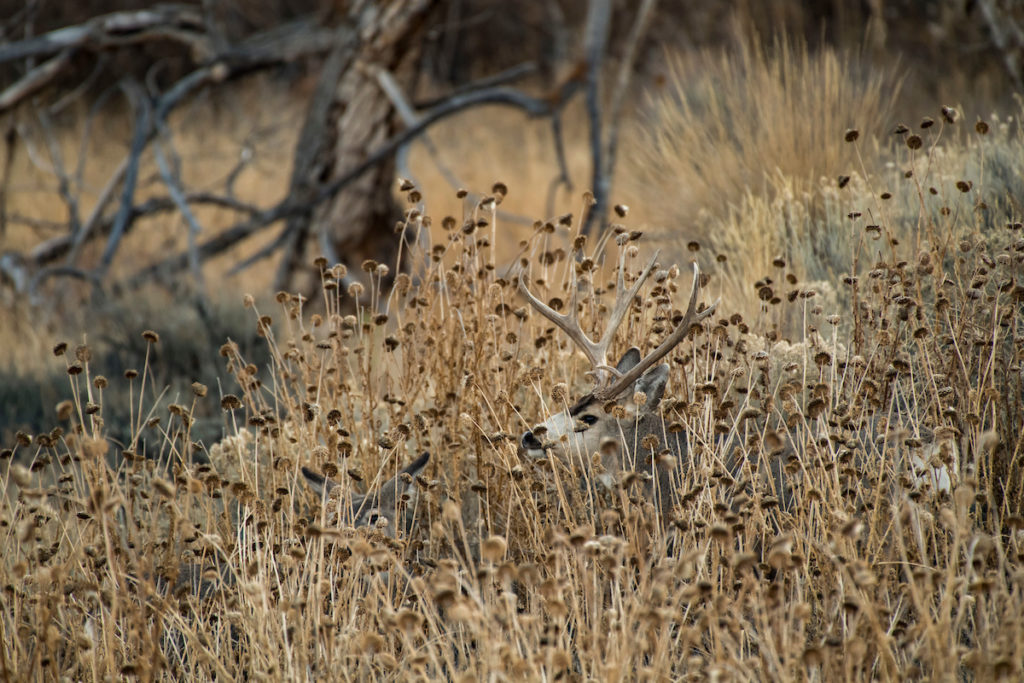The best time for whitetail fanatics to improve the habitat where they hunt is in the months between the end of one season and opening day of the next. Even if you own or lease just 100 acres or less, these projects will help you improve your small piece of deer hunting heaven in a big way.
If you own property, check out any programs your state’s fish and wildlife agency offers. For example, Wisconsin hunters can receive countless education resources by enrolling their property in the Department of Natural Resource’s Deer Management Assistance Program, which is available at no cost for those who enroll fewer than 160 acres. Hunters work one-on-one with a biologist and forester to dig into specific ways to improve the habitat on their property. Pennsylvania, New York and several other states offer similar programs to help hunters reach their habitat goals for deer and other wildlife.
“By managing actively for deer, you’re also benefiting a lot of other species such as turkeys, woodcock, ruffed grouse and even nongame species,” said Eric Canania, southern district deer biologist for the Wisconsin DNR. “It’s going to bring your land to life.”
A food plot might seem like a quick route to better deer hunting, but if you hunt a small property, you want to strategically choose the seeds you plant so they bring value to your honey hole for the entire year. Brassicas are a great option that can withstand heavy browsing, which is an essential consideration for those with limited room for planting. Sown in late July or early August, depending on where you live, plants such as turnips and radishes have lush, green leaves that are desirable from early fall until the first hard frost. At that point, deer shift their focus from the leaves to the bulbs, making brassicas an excellent attractant for the entirety of the hunting season. When the snow finally thaws in early spring, consider frost seeding a clover mix into your brassica plot. Turkeys and deer will feed on it throughout spring and summer, and it’ll also add nitrogen, which only benefits future brassica plots.
Even if you have plenty of water in your area, don’t overlook the draw a secluded water hole can add to your property. Simply digging a hole and installing a plastic swimming pool is an affordable option for those with limited resources. Be sure to cover the bottom of the pool with sand and gravel, and leave a stick lying in the water so any small critters that might fall in can climb out.
Water holes create a hub of deer activity on your property, and they’re ideal for a secluded ambush location or trail camera. Deer will frequent the water source on hot days in the early season, to stay hydrated during the rut and to scent check for does.

Don’t feel pressured to plant a food plot in every open area of your property. Instead, set aside some of these spots and let them grow into thick, brushy early successional habitat. These locations are great for adding diversity to your property and for creating edge habitat that provides high-quality, digestible food sources in thick cover. According to Canania, an overgrown field can provide upward of 2,000 pounds of food per acre.
“Deer need to consume 5% to 8% of their body weight in quality forage each day to reach their peak potential,” said Canania. “Depending on their weight, that can be upwards of 2,000 pounds of food for each deer per year.”
Open canopies allow light to reach the forest floor, which enables desired species to regenerate. Mature timber that doesn’t allow light to penetrate is a telltale sign that you should contact your local forester and plan to cut it. Foresters can recommend a management plan and confirm whether invasive species are present and need to be removed. A properly managed forest will have a high stem count of new growth that deer will browse on. In addition to the value that young forest provides to wildlife, some timber cuts have significant value and can provide helpful monetary support to landowners.
Right now is the best time to get started managing the habitat on the property you hunt. Regardless of your property’s size, these tips will help make the habitat more valuable to deer and other wildlife. You’ll enjoy quality hunting for years to come by investing a bit of sweat equity during the off-season.